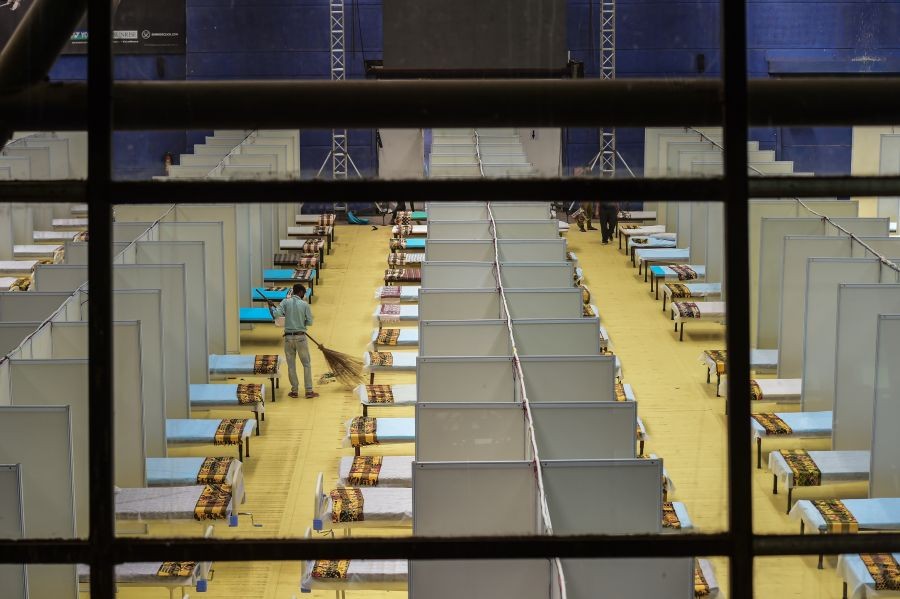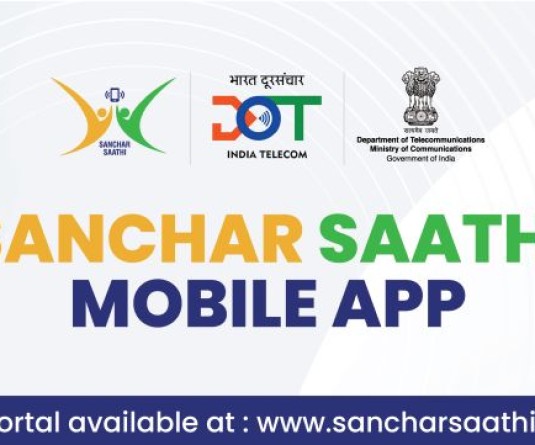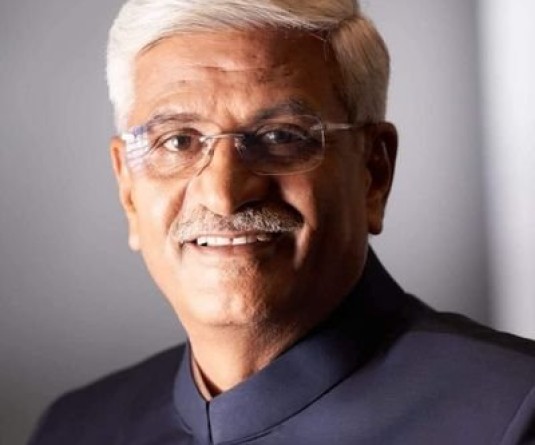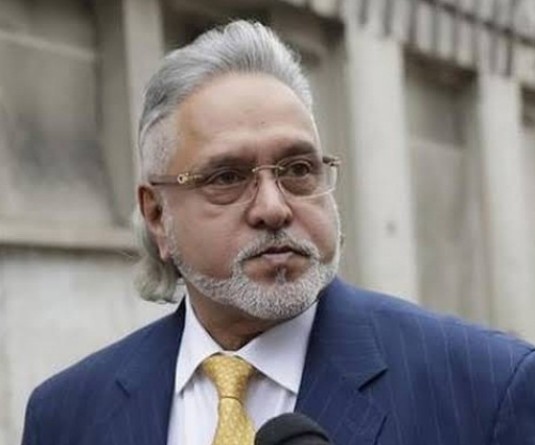A sweeper cleans an area near beds at Covid Care Centre inside CWG village, as coronavirus cases surge in New Delhi on April 19. (PTI Photo)

New Delhi, April 19 (PTI): Asserting that the older population continues to remain more vulnerable to coronavirus infection, top medical experts in the government on Monday said over 70 per cent of the patients in both the waves have been above 40 years and there is no difference in deaths among hospitalised patients in the two waves.
Addressing the media, ICMR Director General Balram Bhargava said oxygen requirement is higher in the second wave, while ventilator requirement is not higher.
Prevalence of shortness of breath was slightly higher in the second wave of COVID-19 but symptoms like sore throat and dry cough were higher in the first wave, he said.
"Shortness of breath among patients is found to be slightly higher in the second wave as compared to the first. However, other symptoms like fast breathing, dry cough, sore throat, loss of smell, weakness of limbs, chills, joint pain, fatigue, muscleache and headache were found to be higher in patients in the first wave. Shortness of breath was found in 41.7 per cent of patients surveyed in first wave as compared to 47.5 per cent in second wave," he said
"There is no difference in deaths between the first and second wave among hospitalised patients. Further analysis into the death of admitted patients did not show any difference. It is 9.6 per cent in hospitalised patients in the first wave and 9.7 per cent among patients in the second wave," he said.
Bhargava said the requirement of oxygen was higher in the second wave at 54.5 per cent as compared to first wave at 41.1 per cent. The requirement of mechanical ventilation was lower in the second wave at 27.8 per cent as compared to the first wave at 37.3 per cent.
He said more than 70 per cent patients in both waves are over 40 years and there is only a marginally higher proportion of younger patients.
"More than 70 per cent of patients are above 40 years in both waves. Older population continues to be more vulnerable as they have co-morbidities, and the proportion of patients in the younger age group is only marginally higher despite opening up of activities. Among age groups 0-19 years -- 4.2 per cent (first wave) versus 5.8 per cent (second wave) -- and 20-40 years age group -- 23.7 per cent (first wave) versus 25.5 per cent (second wave)," he added.
"We have analysis of about 9,485 in-patients who have been admitted. The average age was 50.4 years in first wave and 48.9 years in the second wave. At least one co-morbidity is slightly higher in the first wave that is 54.9 per cent and in second wave it is 48.6 per cent," he said.
He said a higher proportion of asymptomatic individuals got admitted in the second wave and a higher proportion of admitted patients presented with breathlessness and more requirement of supplemental oxygen in the second wave.
"Asymptomatic or mild illness can be managed at home and it does not require hospitalisation. Moderately ill patients, if managed as per guideline, can be discharged earlier. Oxygen supply for care needs to be ramped up. Ventilator requirement is not higher in the second wave nor is death higher in the second wave," he said.
NITI Aayog Member (Health) V K Paul said in the first wave 31 per cent patients were aged less than 30 years and this time it was up to 32 per cent.
"This is the data coming from the ground. If we look at age profiles, we will see in the last year people under 30 years contributed 31 per cent of the cases and now it is 32 per cent, so essentially there is no difference. There is no overarching excess of young people becoming COVID positive. The main point we are making is essentially we do not see a shift in the age prevalence of COVID-19 overall in the country," Paul said.
The details emerged from a national COVID registry that was envisaged during the first wave for collecting data of admitted patients in hospitals. The data available for hospitalised patients from 40 centers across the country: first wave: September- November 2020 and second wave is March-April 2021.
The registry takes into account 1,885 hospitalised patients in the second wave and 7,600 patients in the first wave.






